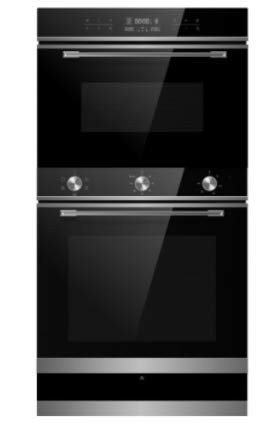Understanding Oven Hobs: The Heart of Culinary Crafting
In the realm of modern-day kitchen areas, the oven hob stands out as an indispensable appliance. Not just is it a central part for preparing a range of meals, but it also affects kitchen aesthetic appeals, performance, and performance. This post explores the kinds of oven hobs, their functions, benefits, and maintenance tips. Furthermore, it attends to some frequently asked questions to offer a thorough understanding of this necessary kitchen appliance.
Types of Oven Hobs
Oven hobs can be classified into numerous types based on their energy source and design. Understanding these variations can help customers make informed choices when choosing the ideal hob for their kitchen requires.
1. Gas Hobs
Gas hobs use natural gas or propane as fuel, providing accurate temperature level control and rapid heat. They are favored by many chefs for their ability to provide visual feedback through flame.
Pros:
- Quick heat-up time.
- Precise temperature changes.
- Compatible with all types of pots and pans.
Cons:
- Requires a continuous gas supply.
- Safety interest in open flames.
- Requires more upkeep.
2. Electric Hobs
Electric hobs are powered by electrical energy and function smooth glass or ceramic surfaces. They often are available in two types: coil and solid.
Pros:
- Sleek look.
- No open flames, minimizing safety threats.
- Easy to clean up.
Cons:
- Slower to heat up and cool down.
- May need specific cookware (induction).
- Some may have unequal heat distribution.
3. Induction Hobs
Induction hobs utilize electromagnetic energy to straight heat pots and pans. They only work with ferromagnetic cookware.
Pros:
- Very energy-efficient.
- Quick heating & cooling times.
- Safe, as the surface stays relatively cool.
Cons:
- Limited to particular kinds of pots and pans.
- Higher initial cost.
- Can produce noise when in use.
4. Strong Plate Hobs
These electric hobs feature solid metal plates that heat up and retain heat for cooking.
Pros:
- Durable and trustworthy.
- Uncomplicated operation.
Cons:
- Takes time to warm up.
- Less effective than induction and gas models.
| Hob Type | Heat Source | Aesthetic appeals | Maintenance |
|---|---|---|---|
| Gas Hobs | Gas | Traditional | Moderate |
| Electric Hobs | Electrical energy | Modern/Sleek | Low |
| Induction Hobs | Electromagnetic | Contemporary | Low |
| Strong Plate Hobs | Electrical power | Classic | Typical |
Features to Consider When Choosing an Oven Hob
When selecting the best oven hob for your kitchen, there are a number of essential functions to take into consideration. These consist of:
- Size: Ensure the hob fits the designated space in your kitchen.
- Variety of Burners: Consider your cooking style and the number of burners you'll need.
- Control Type: Look for user-friendly controls, whether touch-sensitive or knobs.
- Safety Features: Many modern hobs include security measures like flame failure gadgets or child locks.
- Energy Efficiency: Choose energy-efficient models to minimize energy expenses and decrease your environmental effect.
Benefits of Using an Oven Hob
The oven hob supplies numerous benefits that deal with both amateur cooks and professional chefs. Here are some essential benefits:
- Versatility: Whether boiling, frying, simmering, or sautéing, an oven hob accommodates different cooking techniques.
- Convenience: Many hobs featured additional functions like timers and automatic shut-off systems for included benefit in hectic kitchen areas.
- Improved Cooking Control: The instant heat responses of gas and induction hobs enable much better control over cooking temperature levels.
- Style Enhancement: Modern hobs can improve the general aesthetic of a kitchen, including a contemporary touch.
Maintenance Tips for an Oven Hob
To ensure the longevity and efficiency of an oven hob, proper upkeep is important. Here are some upkeep suggestions:
Regular Cleaning:
- Use a soft fabric and mild cleaning agent to clean surface areas after each use.
- For induction and ceramic hobs, prevent abrasive cleaners to prevent scratching.
Look for Wear and Tear:
- Inspect rubber seals and connections in gas hobs regularly for any damages or leakages.
- Make sure electrical connections are safe in electric hobs.
Professional Servicing:
- Schedule routine maintenance checks with a certified specialist to prevent major issues.
The oven hob is a crucial element in any kitchen, acting as a focal point for cooking endeavors. Whether picking Hobs Sales , electric, or induction, comprehending the different types, features, and maintenance requirements is important for making a well-informed choice. A well-chosen hob not only improves cooking efficiency but likewise enhances the total kitchen experience.
Regularly Asked Questions (FAQs)
1. What kind of hob is best for a newbie?
Electric hobs are often preferred by newbies due to their ease of usage and maintenance.
2. Can I utilize all pots and pans on an induction hob?
No, induction hobs require ferromagnetic cookware for them to work correctly.
3. How do I understand if my gas hob is working efficiently?
Frequently look for even flame distribution and listen for any hissing noises that may indicate leaks. If in doubt, speak with a professional.
4. Is a greater cost constantly better for hobs?
Not always. While higher-priced models might offer advanced features, several mid-range items provide exceptional performance and longevity.
5. Can I set up a hob myself?
It is a good idea to work with an expert, particularly for gas hobs, due to safety issues and regional guidelines.
By understanding the subtleties of oven hobs, home cooks can make a knowledgeable choice that lines up with their culinary ambitions and kitchen designs. Selecting Hobs Sales cooking experience and kitchen aesthetic appeals, making it a key investment for any home.

